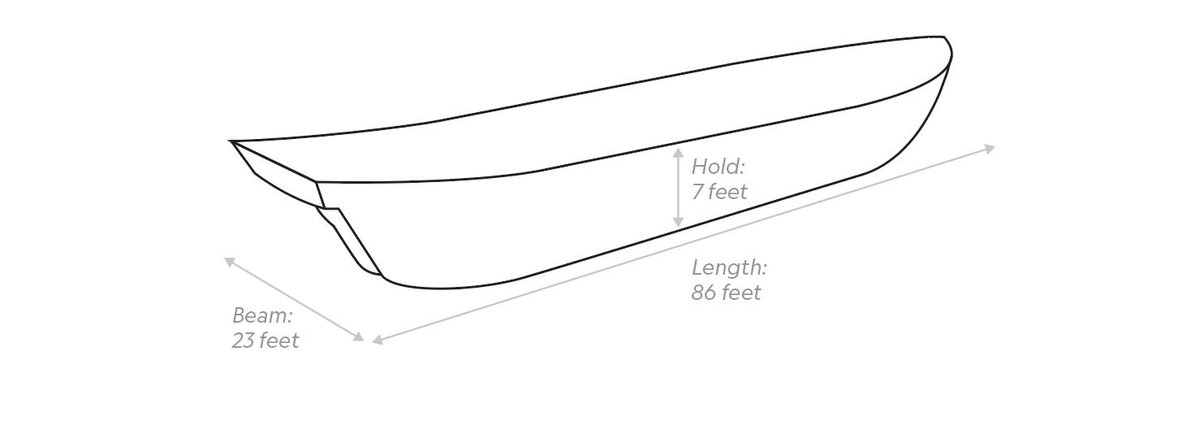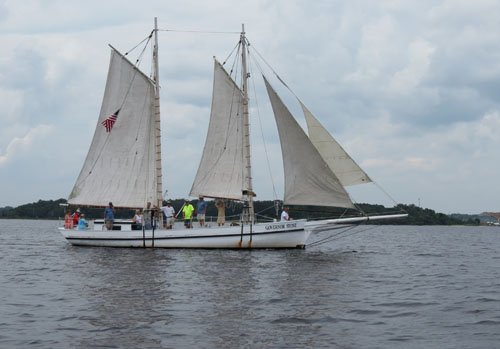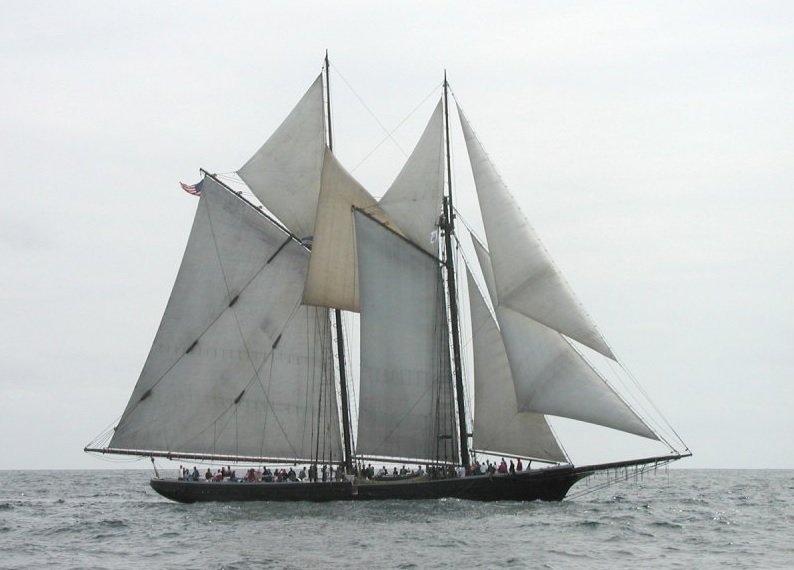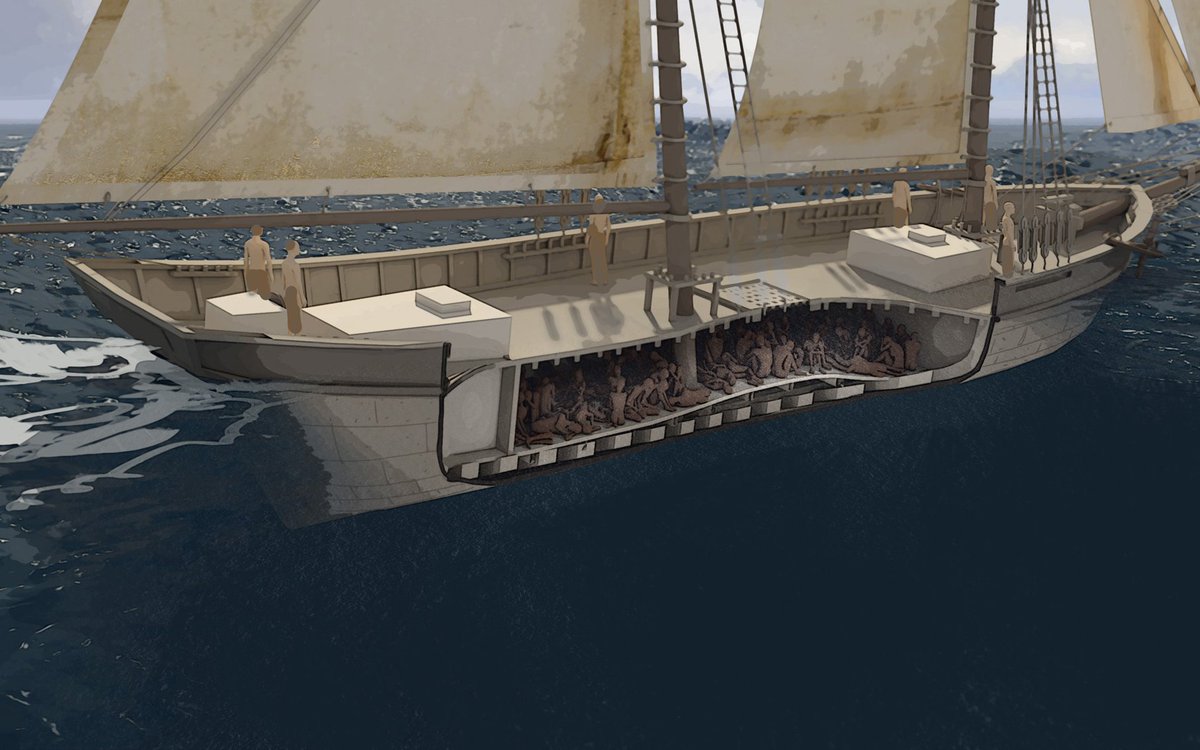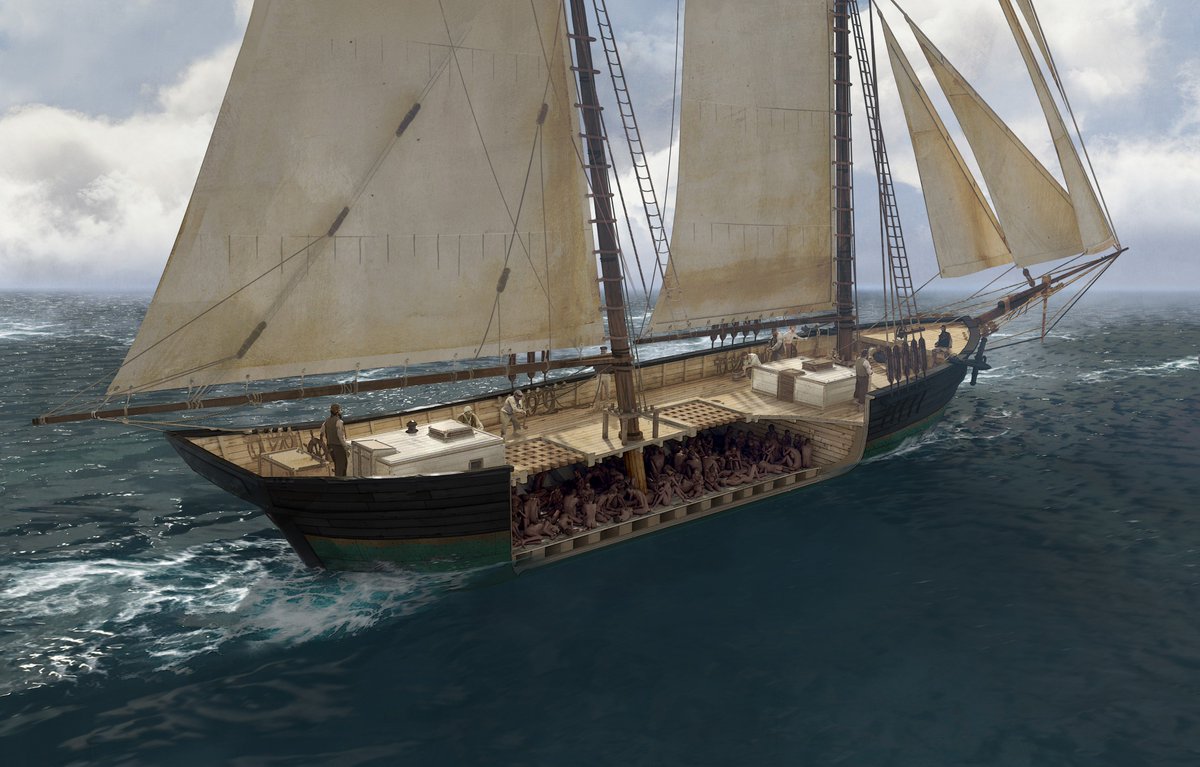For @NatGeo : How do you recreate a notorious slave ship that was sunk in 1860 with no photos or illustrations? By consulting insurance documents and experts on naval archaeology. THREAD (1/15): https://on.natgeo.com/30C6zNW ">https://on.natgeo.com/30C6zNW&q...
We know Clotilda was a two-masted, topsail schooner manufactured in the Mobile, AL area (a & #39;Gulf schooner& #39;). We also know that it had a copper-sheathed hull. How do we know this? (2/15)
A copper-sheathed hull was essential for trans-Atlantic voyages to protect the ship from ocean waves. Of the hundreds of Gulf schooners built in the Mobile area at the time, only five were insured for trans-Atlantic voyages. The Clotilda was one of them. (3/15)
From those documents, we get the dimensions: 86& #39; long with a beam of 23& #39; and a hold that was about 7& #39;. These are all consistent with the wreckage found in the Mobile-Tensaw delta. (4/15)
Then we turn to the experts. James Delgado is a maritime archaeologist and historian who led the exploration of the site. He knows A LOT about all kinds of ships, specifically 19th century sailing ships. (5/15)
Jim gave us two ships that we do have photos of for reference: The Governor Stone for the hull of the boat, and the Ernestina for the mast and sail rigging. (6/15)
From there, we get additional details: Clotilda was twice as long as the Governor Stone, there would have been a cargo hatch in between the masts, a cabin at the stern, etc. Awesome research by @kelseynowa (7/15)
Now we’re cooking. @ThomTenery , a fantastic artist who has worked on concept art for a small movie franchise that you might have heard of called Star Wars, went to work. You can see his amazing work here: https://www.thomlab.com/ ">https://www.thomlab.com/">... (8/15)
We want the composition to focus on the heart of the story: the heartbreaking, horrible conditions in the hold. 110 souls were kidnapped from their homes and crammed in this ship, forced into slavery. ON A BET. Read about it here: https://on.natgeo.com/2wertVq ">https://on.natgeo.com/2wertVq&q... (9/15)
To focus on the hold, we& #39;ll need to play around with compositions. Thom creates a 3-D model, which allows us to move it around the scene, and allows us to get feedback from experts on historical accuracy before painting. (10/15)
This is a good start, but there still details to solve for: What would the crew be wearing? What color is the hull? How about the sails? We get feedback from experts, consult reference photos, and Thom starts to paint. (11/15)
Here& #39;s the end result. This ship hasn& #39;t been seen since it was burned and scuttled in 1860 to cover up a horrendous crime. (12/15)
@LaurenLeadmon then took this beautiful image and animated it, making it rock upon the waves. (13/15)
The end result is a beautiful, historically accurate rendering of the ship. The hope is that by bringing this notorious ship to life, we can wrestle with the truth of this shameful incident. (14/15)
Make sure you check out the graphics page which lays out the evidence, along with a great map by @mapchwastyk
https://on.natgeo.com/30C6zNW
And">https://on.natgeo.com/30C6zNW&q... be sure to read the story by @joel_bourne with photographs by @EliasNotAlias
https://on.natgeo.com/2wertVq
END">https://on.natgeo.com/2wertVq&q... (15/15)
https://on.natgeo.com/30C6zNW
And">https://on.natgeo.com/30C6zNW&q... be sure to read the story by @joel_bourne with photographs by @EliasNotAlias
https://on.natgeo.com/2wertVq
END">https://on.natgeo.com/2wertVq&q... (15/15)
UPDATE: I& #39;ve corrected this graphic to note that the copper sheathing was for protection from decay. Thanks for the heads-up to @waitmanb and @CyranodEcosse

 Read on Twitter
Read on Twitter